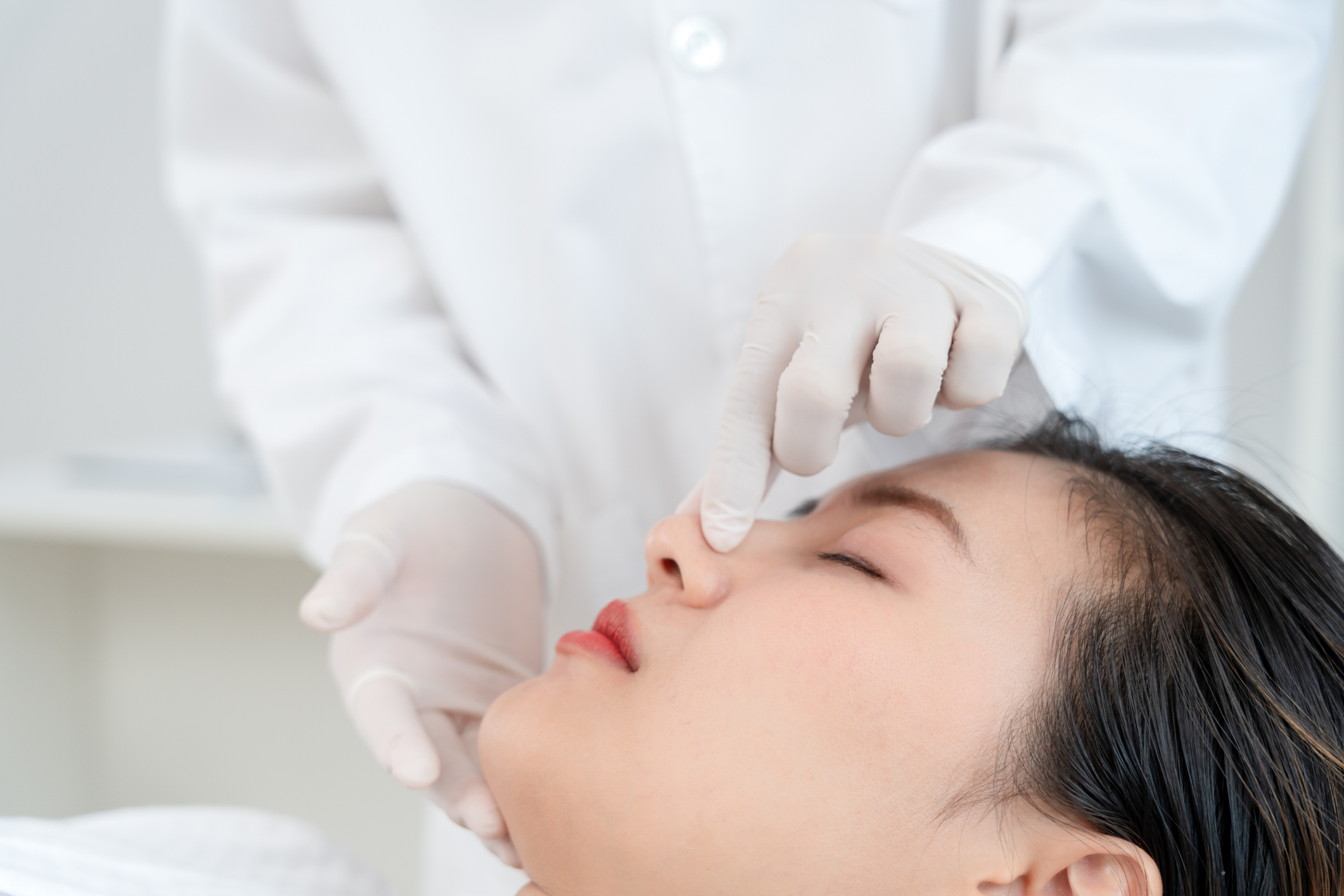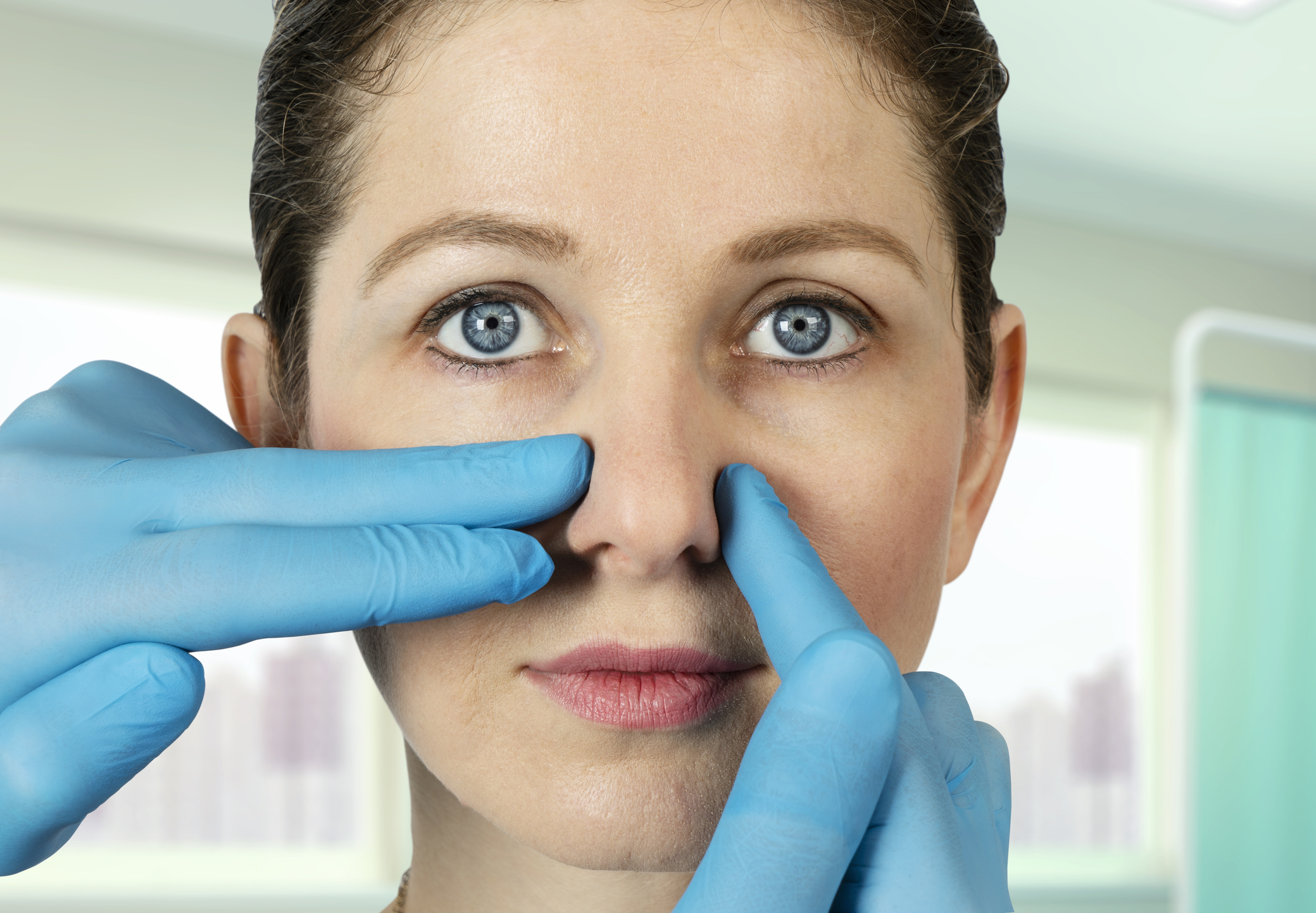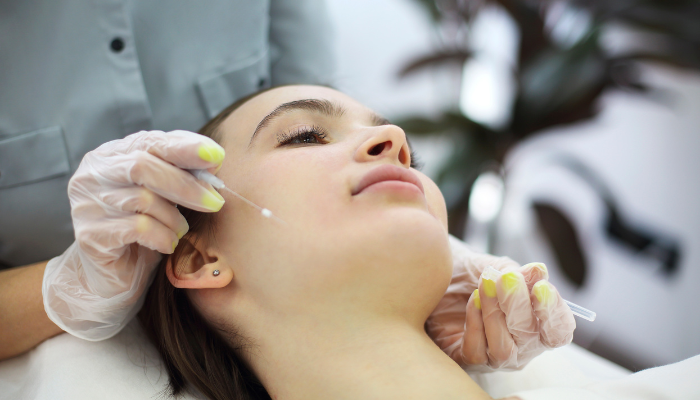Dreaming of a more defined, lifted nose but not ready for surgery? The Silhouette Suture Lift might be the perfect solution. This non-invasive nose enhancement uses dissolvable sutures to subtly lift and reshape the nose—without downtime, scalpels, or long recovery periods.
But how does it work? How long do the results last? And is it the right choice for you? In this guide, we’ll break down everything you need to know about the Silhouette Suture Lift for the nose, including its benefits, results, and what to expect. If you’re looking for a natural-looking, non-surgical way to enhance your profile, keep reading!
Key Takeaways
- The silhouette suture lift is a non-surgical method for nose enhancement.
- This procedure involves using threads to lift and reshape the nose.
- Patients can enjoy reduced recovery time compared to traditional surgery.
- Results appear natural and gradually improve over time.
- Ideal candidates are those with realistic expectations and suitable skin conditions.
Understanding Silhouette Suture Lift Techniques

What Is a Silhouette Suture Lift?
So, what exactly is a Silhouette Suture Lift? Well, it’s a minimally invasive procedure designed to lift and contour the face, and in our case, the nose, without the need for surgery. It involves using special threads, called sutures, that are inserted under the skin to lift the tissues.
These sutures have tiny cones or barbs that grip the skin, allowing the practitioner to reposition and lift the desired areas. The sutures are made from a biocompatible material that is eventually absorbed by the body, stimulating collagen production in the process. It’s like scaffolding under your skin, giving it a lift and encouraging it to rebuild itself.
How Does the Procedure Work?
The procedure itself is pretty straightforward.
- First, the area is numbed with a local anaesthetic.
- Then, using a fine needle, the sutures are inserted under the skin in a specific pattern designed to achieve the desired lift.
- The practitioner then gently pulls and adjusts the sutures to lift and contour the nose.
- The cones or barbs on the sutures anchor them in place, holding the lifted tissues in their new position.
- Finally, the excess suture is trimmed, and that’s it!
The whole thing usually takes less than an hour, which is a big plus.
Benefits of Choosing a Suture Lift
There are several reasons why someone might opt for a suture lift over other nose enhancement options:
- Minimal Downtime: Unlike surgery, the recovery time is significantly shorter. You might experience some mild swelling or bruising, but most people can return to their normal activities within a few days.
- Natural Results: The lift is subtle and natural-looking, avoiding the overly “done” appearance that can sometimes occur with more invasive procedures.
- Collagen Stimulation: As the sutures dissolve, they stimulate collagen production, which can improve skin texture and firmness over time.
- Reversible: While the results can last for a good while, the procedure isn’t permanent, and the effects will gradually fade as the sutures are absorbed.
Silhouette Suture Lifts offer a promising middle ground for those seeking noticeable yet natural nose enhancement without the commitment and recovery associated with traditional surgery. It’s a solution worth considering if you’re after a subtle refinement with minimal fuss.
The Advantages of Non-Invasive Nose Enhancement
Non-surgical nose jobs, like the Silhouette Suture Lift, are becoming increasingly popular, and it’s easy to see why. They offer a compelling alternative to traditional rhinoplasty, with a range of benefits that appeal to many people. Let’s explore some of the key advantages.
Minimal Downtime and Recovery
One of the biggest draws of a non-invasive nose job is the significantly reduced downtime. Unlike surgery, which can require weeks of recovery, a suture lift typically allows you to return to your normal activities within a few days. There might be some mild swelling or bruising, but it’s generally manageable and fades quickly.
This means less time off work and a faster return to your daily routine. I remember when my friend Sarah had a traditional rhinoplasty, she was out of action for ages! With a suture lift, it’s a completely different story.
Natural-Looking Results
Non-invasive procedures are designed to provide subtle, natural-looking changes. The goal isn’t to completely overhaul your nose, but rather to refine and enhance its existing features.
This approach helps to maintain your unique facial harmony, ensuring that the results complement your overall appearance. It’s about looking like a better version of yourself, not someone else entirely. I think that’s what most people are after, right?
Reduced Risk of Complications
Compared to traditional surgery, non-invasive nose enhancements carry a lower risk of complications. Because the procedure doesn’t involve the following:
- Cutting or removing bone or cartilage
- Less chance of infection
- Scarring
- No other surgical risks
Of course, there are still potential side effects, which we’ll discuss later, but they are generally less severe and easier to manage. It’s always good to weigh up the risks, and with suture lifts, they’re generally lower.
Choosing a non-invasive option can provide peace of mind, knowing that you’re opting for a procedure with a lower risk profile. This can be especially reassuring for those who are hesitant about undergoing surgery.
Here’s a quick comparison of recovery times:
| Procedure | Typical Downtime |
|---|---|
| Suture Lift | 1-3 days |
| Traditional Surgery | 2-4 weeks |
Here are some benefits of non-invasive nose jobs:
- Quick recovery
- Subtle changes
- Lower risk
Who Is an Ideal Candidate for a Suture Lift?
So, you’re thinking about a suture lift for your nose? That’s great! It’s a pretty cool procedure, but it’s not for everyone. Let’s figure out if you’re a good fit.
Age Considerations
Age definitely plays a role. Generally, the best candidates are those in their late 20s to early 50s. Why? Because this is often when we start to see the early signs of sagging but the skin still has good elasticity. If you’re older, the skin might not respond as well to the lift, and other options might be better. Younger? Well, you might not need it yet!
Skin Type and Condition
Your skin’s condition is important. Ideally, you’ll have mild to moderate skin laxity. If your skin is super thick or really thin, or if you’ve got a lot of sun damage, a suture lift might not give you the results you’re hoping for. Also, if you have certain skin conditions, it’s best to chat with a practitioner to see if it’s still a good idea.
Expectations and Goals
This is a big one. It’s important to have realistic expectations. A suture lift can give a nice, subtle lift and improve the shape of your nose, but it’s not going to give you the dramatic changes you’d get with surgery.
If you’re looking for a major transformation, this might not be the right choice. Think about what you really want to achieve and discuss it with your practitioner.
It’s all about finding the right balance. A suture lift can be a fantastic option for those looking for a subtle, non-surgical improvement. But it’s crucial to understand the limitations and ensure your expectations align with what the procedure can realistically achieve.
Here’s a quick checklist to consider:
- Are you experiencing mild to moderate nasal drooping?
- Is your skin relatively healthy with good elasticity?
- Are you looking for subtle, natural-looking improvements?
- Do you understand the limitations of a non-surgical procedure?
If you answered yes to most of these, a suture lift could be a great option for you!
The Procedure: What to Expect During Your Appointment
Here’s what you can expect when you come in for your appointment. It’s always good to know what’s coming, right?
Initial Consultation and Assessment
First things first, you’ll have a chat with your surgoen. This initial consultation is super important. The discussion will include your goals for the procedure, what you’re hoping to achieve, and whether a suture lift is the right option for you. The surgoen will examine your nose, assess your skin, and talk about your medical history.
It’s a two-way street, so please feel free to ask any questions you have. It is important that you feel comfortable and well-informed.
Step-by-Step Procedure Overview
Okay, so what actually happens during the procedure? Here’s a breakdown:
- Preparation: Your nose will be cleaned and prepped. We’ll mark the areas where the sutures will be inserted.
- Local Anaesthesia: We’ll use a local anaesthetic to numb the area. This means you’ll be awake, but you won’t feel any pain. You might feel some pressure or a slight tugging sensation, but it shouldn’t be painful.
- Suture Insertion: Using a fine needle, I’ll insert the Silhouette Soft sutures into the pre-marked areas. The sutures have tiny cones that grip the tissue beneath the skin.
- Lifting and Contouring: Once the sutures are in place, I’ll gently manipulate them to lift and reshape your nose. This is where the magic happens!
- Suture Trimming: Any excess suture material will be trimmed.
- Final Check: We’ll take a look to make sure everything is symmetrical and that you’re happy with the initial results.
The whole procedure usually takes between 60 and 90 minutes. It’s pretty quick, and most people find it quite tolerable.
Post-Procedure Care and Instructions
After the procedure, you’ll get detailed aftercare instructions. It’s really important to follow these carefully to ensure the best results and avoid complications. Here are some general guidelines:
- Apply a cold compress to reduce swelling.
- Avoid touching or manipulating your nose for a few days.
- Sleep on your back with your head elevated.
- Avoid strenuous exercise for a week or two.
- Take any prescribed medication as directed.
We’ll also schedule a follow-up appointment to check on your progress and make sure everything is healing nicely. We’re here to support you every step of the way!
Comparing Suture Lift to Other Nose Enhancement Options
Suture Lift vs. Traditional Surgery
How does it stack up against the traditional nose job, or rhinoplasty? Well, the big difference is that surgery is, well, surgery. It involves cutting, reshaping bone and cartilage, and a longer recovery.
A suture lift, on the other hand, is minimally invasive. Think of it as a less intense option. Surgery can achieve more dramatic, permanent changes, but it comes with more risks and downtime. Suture lifts are great for smaller tweaks.
Suture Lift vs. Dermal Fillers
Dermal fillers, often made of hyaluronic acid, are another non-surgical way to adjust the shape of your nose. They’re injected to add volume and smooth out bumps. The main thing to remember is that fillers add volume, while a suture lift can lift and reshape.
- Fillers are good for camouflaging a dorsal hump or adding height to the bridge.
- A suture lift can lift the tip or narrow the nose.
Plus, fillers are temporary, usually lasting from months, while suture lifts can last longer, sometimes a year or more.
When to Choose Each Option
Choosing the right procedure really depends on what you want to achieve. Here’s a quick guide:
- Suture Lift: Ideal if you want a subtle lift, refine the tip, or narrow the nose without surgery.
- Dermal Fillers: Best for adding volume, smoothing bumps, or correcting asymmetry. A good option if you’re not ready for something permanent.
- Traditional Surgery: The way to go if you need significant nose reshaping, have breathing problems, or want permanent results.
It’s important to have a detailed consultation with a qualified practitioner. They can assess your nose, discuss your goals, and recommend the best option for you. Don’t rush into anything; take your time to weigh the pros and cons of each procedure.
Ultimately, the best choice is the one that aligns with your goals, budget, and comfort level. Good luck!
Potential Risks and Considerations
Okay, so you’re thinking about a suture lift for your nose. It’s good to be aware of the potential downsides, even though it’s generally a pretty safe procedure. Let’s have a look at what you should keep in mind.
Common Side Effects
Right after the procedure, it’s normal to experience some swelling, bruising, and tenderness around the injection sites. You might also feel a bit of discomfort or a pulling sensation. These effects are usually mild and fade away within a few days to a week.
Some people also report slight redness or itching. These are all part of the body’s natural healing process. If anything seems excessive or lasts longer than expected, it’s always best to check in with your practitioner.
Long-Term Considerations
While suture lifts offer a noticeable improvement, it’s important to remember that the results aren’t permanent. The sutures will naturally dissolve over time, typically within 12-18 months, and the effects of the lift will gradually diminish. To maintain the desired outcome, you might need to consider repeat treatments.
Also, while rare, there’s a small chance of suture migration or extrusion, which would require further attention. It’s also worth noting that significant weight fluctuations or further ageing can affect the longevity of the results.
Consultation with a Qualified Practitioner
This is probably the most important thing. Before you even think about booking a suture lift, have a proper consultation with a qualified and experienced practitioner.
They can assess your individual needs, discuss your expectations, and determine if a suture lift is the right option for you. They’ll also be able to explain the procedure in detail, answer any questions you have, and outline the potential risks and benefits.
A thorough consultation is key to ensuring you’re fully informed and can make an empowered decision about your treatment. It’s also a chance to build a relationship with your practitioner and ensure you feel comfortable and confident in their care.
It’s a good idea to ask about their qualifications, experience, and before-and-after photos of previous patients. Don’t be afraid to ask questions – it’s your face, after all!
Here’s a little checklist to keep in mind:
- Check the practitioner’s qualifications and experience.
- Discuss your expectations and goals.
- Understand the potential risks and benefits.
- Ask about aftercare and follow-up appointments.
Aftercare for Optimal Results
Proper aftercare is vital for a smooth recovery and to maximise the longevity of your results. Think of it as investing in your investment – a little effort now goes a long way.
Immediate Aftercare Tips
Right after the procedure, there are a few things you should keep in mind:
- Apply cold compresses: This helps reduce any swelling or bruising. Use them for about 15-20 minutes at a time, several times a day, for the first few days.
- Avoid strenuous activities: Give your face a rest! Skip the gym and heavy lifting for at least a week.
- Sleep on your back: This prevents putting pressure on the treated area. Prop yourself up with an extra pillow or two.
- Be gentle when washing your face: Use a mild cleanser and pat your skin dry. Avoid rubbing or scrubbing.
Long-Term Maintenance
To keep your nose looking its best, consider these long-term maintenance tips:
- Sun protection is key: Always wear sunscreen with a high SPF to protect your skin from sun damage. This helps maintain skin elasticity and prevents premature ageing.
- Maintain a healthy lifestyle: A balanced diet and regular exercise contribute to overall skin health.
- Consider complementary treatments: Talk to your practitioner about other treatments that can enhance and prolong the effects of your suture lift, such as regular skincare routines or gentle facial massages.
Signs of Complications to Watch For
While complications are rare, it’s important to be aware of potential issues. Contact your practitioner immediately if you experience any of the following:
- Excessive pain or swelling that doesn’t subside with cold compresses.
- Signs of infection, such as redness, warmth, or pus.
- Noticeable asymmetry or displacement of the sutures.
- Allergic reactions, such as itching, rash, or difficulty breathing.
Remember, your practitioner is your best resource for any questions or concerns you may have during your recovery. Don’t hesitate to reach out to them – they’re there to support you every step of the way!
Conclusion
The Silhouette Suture Lift offers a fantastic option for those wanting to enhance their nose without going under the knife. This non-invasive procedure can provide a subtle lift and reshape, making it a great choice for many. With minimal downtime and natural-looking results, it’s worth considering if you’re looking for a way to boost your confidence.
Always consult with a qualified professional to discuss your goals and see if this treatment is right for you. Remember, a little change can make a big difference!
Frequently Asked Questions
What is a Silhouette Suture Lift?
A Silhouette Suture Lift is a non-surgical procedure that helps to lift and shape the nose without needing any cuts or stitches. It uses special threads that are placed under the skin to give a subtle lift.
How long does the procedure take?
The actual procedure usually takes about 30 to 60 minutes. It’s quite quick, and most people can go back to their normal activities right after.
Are there any side effects for Suture Lift?
Some people might feel a bit of swelling or bruising after the procedure, but these usually go away quickly. Serious side effects are rare.
How long do the results last?
The results from a Silhouette Suture Lift can last from 6 months to a year, depending on individual factors like skin type and age.
Is there any downtime after the procedure?
Most people can return to their daily activities right away. However, it’s best to avoid strenuous exercise for a few days.
Who is a good candidate for this procedure?
Ideal candidates are usually adults who want to improve the shape of their nose without surgery. It’s important to have realistic expectations about the results.






